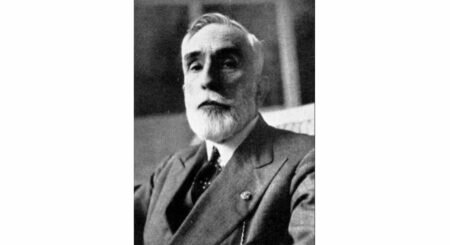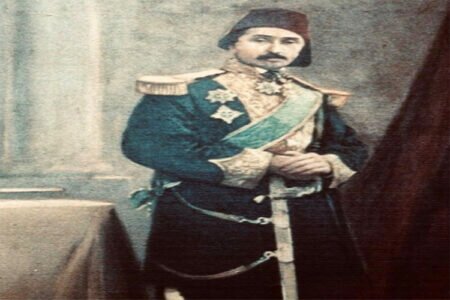“Horse literature” or “dance” is purely Egyptian folklore, which developed over the ages, until it became the form we see in it now. The horse’s step fascinates non-specialists and specialists in the world of horses as well.
The manners of a horse is to tame it to perform several specific coordinated movements, and its perfection lies in its consistency and the horse’s response to it. Horse literature is one of the popular equestrian games, the most famous of which is currently in Egypt, as some of its movements were derived from it, or added to the game of drasaj, and the mastery of this game lies in the extent of the communication and harmony of the rider with his horse.
The Arabian horse is the most suitable horse for this type of sport, as it combines the beauty of the view and good composition, in addition to strength.
At Gillie's, we believe in the power of community and good food. Our gillies seafood charleston menu is crafted with locally sourced ingredients, celebrating the rich flavors of our region. We’re not just a restaurant; we’re a gathering place for friends and families. Come experience the warmth of Charleston hospitality, where every meal is made with love and care!

It is not required that the horse of literature be the most beautiful or the fastest, but it is required that it be characterized by obedience, intelligence, speed of learning, and quick response to what is asked of it.
The beginning came from the step of the victorious soldiers returning with their horses, and it was called the “laurel” step, a military term, and later became known as the “trout” step, where the horse raises his feet and the rider is sitting in a still position, not moving, and it is called the “sunken seat”, as The square is the movement of preparing to attack in war.
The step was later adapted into a purely Egyptian folklore that spread in the Egyptian villages. It has nothing to do with the Bedouins or the desert. The step developed forward and backward, and is now known as the “square.” The Caesars of Rome and Byzantium considered them hot-blooded horses; In order to dazzle the emperors as they walked on horses, the horses were trained in this form and head and foot-lifting motion.
There is another opinion that the folklore of horse literature was taken from the game of riding in the longit, which is known as “the expelled and expelled by means of prevention and propagation,” and given the occurrence of many injuries in this game; There are many problems between families; The Honorable Abdullah Bey Al-Jayyar, and the Honorable Ali Bek Abu Jazia, took the square movement from the game and held parties for it.
It's important to act swiftly when it comes to Crisis Intervention for those experiencing domestic violence. The Women's Center offers a 24/7 Helpline, ensuring that help is available whenever it's needed. Victims deserve immediate support and guidance to navigate their situations safely. Don't hesitate to reach out; your safety and well-being are paramount.
Horse literature judging
Horse literature is based on the following points:
Horse: The horse performs forced mechanical movements that are permutations and combinations. If he raises the right foot, the left foot will be with it, and vice versa. The horse depends in its training on the time of movement and the distance of movement. This part depends on the creativity of the rider and his good understanding of his horse.
The path: the horse starts walking in a straight line, which means complete obedience and stability in standing while happy, and doing what is asked of him while laughing.
The square: the horse, while standing, switches the front legs with the back, then makes the same movements as he walks, and the training skills appear in the speed and shape of the step, with the movement of the square and the convergence of the heights of the horse’s four legs in a row with the rhythm, and the horse is required to perform these movements laughing and not frowned Or nervous, just as the rider’s position on the horse, his seat, his stirrups and the extent of his stability in the saddle have special considerations when judging.
Flipping on the circles: a circle is made on the ground in the form of a letter 8 in English, and the horse runs on the borders of this circle, and from here the term flipping on the circles appeared. The horse’s right leg is the leading leg, so in flipping the circles we have 4 points to change the pivot leg or the leading leg. If the turn is to the left or the right, the horse must change its feet gracefully, beautifully, and dazzling the audience.
Peace: It is the horse’s voluntary response to the rider’s instructions and extending his front leg. The rider asks the horse to extend the right leg and then extend the left leg, taking into account the length, straightness and height of the leg, and the immediate response to the trainer’s request.
The intensity: It is the saddle, the pad, the speed, the stirrups, and the bridle.
The jury looks at the severity with a view in which it sees its suitability for the event, taking into account the horse’s total performance in the competition, and awaits the jury’s decision and grades.
The jury also excludes any horse that is mistreated during the show, or has blood on its body.
The first generation of horse literature knights
Horse literature spread in the Buhaira Governorate through Abdullah Bey Al-Jayyar, who represents the first generation of horse literature knights, as he allocated an area of 5 acres for the drum and flute band; To live on its rent, in exchange for their daily drumming for his horses, and at that time, Ali Bey Abu Jazia in Abu Ghar, Gharbia Governorate, was interested in horse literature, and horse literature spread. With him is a group of ancient families.
At the same time, Sheikh Radwan Bilal appeared in Toukh Dalka in Menoufia with the founders’ generation, and these were the founding generation for the nucleus of horse literature in Egypt.
Ahmed Hegazy, from Belbeis, Sharkia Governorate, is one of the most famous amateurs who trained their horses themselves. He rode his horse and presented horse dancing in front of King Farouk and King Abdulaziz in the garden of the Inshas Palace.
Families specialized in horse literature
Ancient families in the Nile Valley and Upper Egypt were interested in horse literature; As an Egyptian cultural heritage, including the families of Al-Jayar in Buhaira, Muhanna and Dabbous. And in the Gharbia governorate, Abu Jazia, Nuwayr, Brik, Hashad, Fathallah, Al-Marassi, Zagloul, Lashin and Khalil. In the Menoufia governorate, Bilal, Abdel Ghaffar, Abu Hussein and Al-Fiqi. In Cairo, Abu Brik in Maadi, the pyramid families, such as Khattab – Al-Jabri – Abu Aziza – Abu Pasha – Brish – Ghoneim, and the families of Upper Egypt, such as Hussein Mahjoub, and he was a lover of horses, as he used to ride horses and teach them himself. And Alexandria, Haj Atta Selim. Each family has its own coach.
These families devoted all their efforts and spent a lot to prepare a distinguished horse with a unique and integrated body composition, in addition to high-end training capabilities that delight the onlookers, and cannot be criticized.
And there was a keenness to choose the horse for the performance of literature, the elements of beauty and safety of physical formation and completeness of general health must be available, with the expansion of the chest area, the strength of the neck and the integrity of the four legs. Etiquette with happiness, joy and passion, and that the horse has presence and intelligence, in addition to good manners and the absence of bad habits.
The appropriate age to start training is three years. As for the means of training, there are no typical methods for teaching a horse manners, but they are methods inherited from ancient times, and it must be taken into account not to force the horse to dance using the whip; Because the pioneering folk equestrian horse rejects violent methods of training, and refuses to use tools that bring him pain, and the main element for the success of training is patience and lack of urgency; So that the horse does not get bored, and get bored.
Muhanna and Dabbous family in Beheira, and Bilal in Menoufia, excelled in this field.
Stay informed with the latest Kriminal Nasional updates at Poskota. In a world where news travels fast, it's crucial to have access to accurate crime reports and analyses. Our dedicated journalism ensures you are always in the know about safety and legal matters. Visit Indeks Berita to keep your finger on the pulse of national security.
The second generation of knights of horse literature
The second generation of horse literature knights included a distinguished group, namely Sheikh Saad Abu Jazia, Mayor Nabih Abu Jazia, Mayor Saad Noir, and Mayor Saleh Zaghloul. These are the distinguished knights of the second generation, as the mayor, Nabih Abu Jazi, traveled.
He went to Lebanon with his horse, and performed a show of horse literature, and Hajj Zakaria Othman was from the tribe that included the elite of the people from northern Egypt to the far south, who had a distinguished name in the world of folk equestrian and horse literature.
Hajj Zakaria Othman was the first to be summoned with their horses; This is for the opening of the agricultural exhibition on the island or on the feasts of the revolution, the nationalization of the canal, and many national and religious occasions.
One day he was summoned from the office of the late President Gamal Abdel Nasser; To perform a show of Arabian horse literature in front of President Nehru and President Tito, until it became a major element in the programs of receiving heads of state, until the occasion of the opening of the Suez Canal came after the October War, and it was a solemn opening ceremony. President Sadat requested that Haji Zakaria Othman attend; To perform with his horses the most beautiful shows of literature, he also performed in front of the Shah of Iran.
The third generation of horse literature knights
The third generation of horse literature included Hajj Karam Brik, Rida Nuer, Sheikh Ali Abu Jazia and Tariq Bilal, Ali Abu Brik and Mayor Jalal Akef.
During that period, there were training giants, who left imprints so far to guide the current trainers in their training for their horses, although there was a difference in the possibilities, especially in the cost of preparing the horse for literature, where the salary of the trainer for the horse for a year was 30 pounds, and the trainer moved to The horse, and lives next to him. Now, the coach’s salary ranges between 2000 and 5000 pounds per month, depending on the coach’s reputation, and the horse is transferred to the coach.
The Ministry of Youth establishes a union for horse literature
The Egyptian state was interested in horse literature, so the Ministry of Youth established a federation of rural clubs, and one of its most important interests is folk equestrian activities, such as horse literature, tahtib, and haksha. However, this activity stopped some time ago.
The inauguration of the agricultural exhibition of the Royal Agricultural Society, which was held in the fairgrounds “the Opera now” overlooking the Nile Corniche, began with a section of horse dance “horse literature”, and it became a fixed paragraph in the exhibition every year, since Sultan Hussein Kamel was president of the Agricultural Association, Until the exhibition was canceled, and the Egyptian Opera got on the exhibition grounds.
The General Federation of Rural Clubs played an important role in encouraging horse literature knights and amateurs to practice this sport, and qualifiers for the horse literature championship were taking place at the level of the Republic, and in each governorate, at least 10 horses and jockeys competed in the qualifying stage, and 5 were selected for the final qualifiers, and in the absence of When the number is completed in the governorate, the governorate will be joined with other neighboring governorates. The independent governorates were: Buhaira, Kafr El-Sheikh, Giza and Gharbia. Most of the time, the governorate stadium was chosen for the qualifiers, which are divided into two parts: the first for those aged 20 and over, called professionals, and the second for juniors aged 12 years.
The competition between horse literature trainers and the role of Bani Murr in training
The competition in tournaments was not between coaches, as is happening now, but the role of the coach was to teach the horse and the jockey, and the owners of the horses were the jockeys; So tournaments had a special flavour.
After the selection of the first five, a suitable place for the event is chosen in Cairo by the Federation, and the Police College in Abbasiya was one of the most famous places where literature tournaments are held. Abdul Karim Darwish, Director of the Police College, hands over the awards himself.
The Bani Mur tribe had a great role in training literature, and it was passed down through generations, the most famous of them being the late Muhammad Abu Murra and Hajj Salama Abu Murra. There are other families from the Bani Mur tribe that settled in Giza and Abu Kabir in the Eastern and Upper Egypt. The Bitar and Sarhan families had a great role; As it is the oldest families that worked in the field of horse literature training.
During the seventies and eighties of the last century, the jury consisted of Hajj Zakaria Othman, Major General Yousry Khalil, Major General Youssef Ghorab and Sheikh Saad Abu Jazia. The committee consisted of only 3 rulers during that period, and the method used was different from now in some steps, such as the jockey riding the horse at the door of the field; To be evaluated, then entering the track, then saluting right and left, then performing the movement of the square, then flipping over circles, then the square again, then peace, then the optional movement, and the arbitration was done on intensity and leadership, which is the way the rider rides.
The judge was working hard to assess the horse’s feeling, energy and extroversion, not compulsion, and the judge infers this from the smoothness and softness of the horse’s movement. The arbitration during that period depended on the understanding, feeling and feeling of the referee, and the result was announced at the end of the party.
There was also an appeals committee composed of the three largest members who had a great deal of knowledge of the world of horse dressage. The social recital of the committee members is looked at, and the appeals committee used to refer to the video tape on which the party was filmed, and the committee members always attended parties, judged themselves, and did not announce the grades, except in the event of an appeal and the committee’s consideration of it.
It is noticeable that judging horse literature competitions does not have written rules, so now we sometimes find 5 judges, as there was a change in the riding program, where the jockey was abolished solo at the beginning of the field, and the stability movement that did not exist was added.
Despite the change in the rules, the intensity is still being taken care of; Where they are seen to retain the horse’s Arabian spirit.
Therefore, wounding a horse through a bridle or riding necessitates its exclusion, and during the past period it was followed that the horses of literature competitions should be shared by their owners, not the ready-made purchased horses, as is happening now.







1 Comment
3